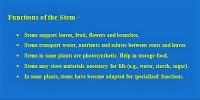Affecting factors of transpiration are of two types; External and Internal.
(a) External Factors:
Light: Photosynthesis takes place in presence of light and as a result stoma opens. So light is the main factor, which influences transpiration
Temperature: With the increase of temperature water vapourises rapidly and increased the humidity in the atmosphere. So temperature controls the rate of transpiration.
Relative Humidity: If relative humidity is less the water vapour holding capacity of the air decreases, therefore rate or transpiration decreases.
- Air Current: The air current disposes of the saturated air (as a result of transpiration), away from the plant and thus increases the rate of transpiration.
- Atmospheric pressure: Under low-pressure water vapourise at low temperature. So if pressure decreases the rate of transpiration increases and if pressure increases the rate of transpiration will decrease.
- Soil water: If availability of soil water is less the rate of transpiration will decrease.
(b) Internal Factors:
- Root-Leaf Ratio: If the number and total surface area of leaves become much less in comparison with root region (absorption region) the rate of transpiration will reduce.
- Leaf area: The greater the leaf area, greater will be the rate of transpiration, and lesser the leaf area the lesser the rate of transpiration.
- The internal surface of leaf: Thin cuticle, thin cell walls, exposed stomata, and well-developed spongy parenchyma favour transpiration. On the other hand, leaves those possesses thick cuticle, thick cell walls, well-developed palisade parenchyma, Sunken stomata etc. will reduce the rate of transpiration.










